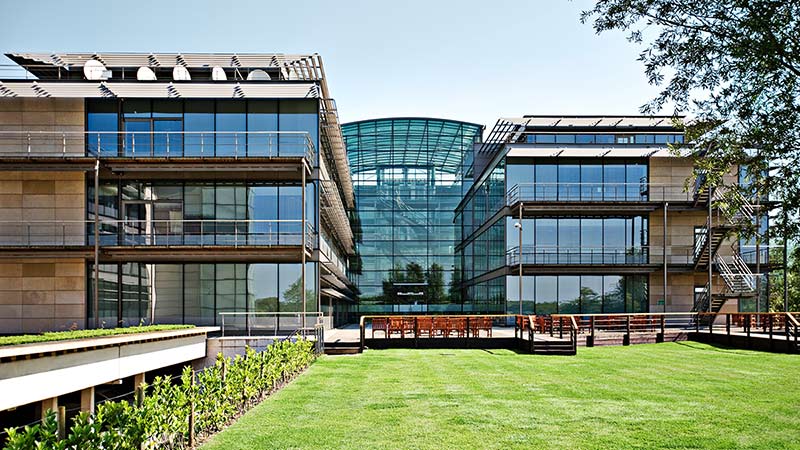Whether for live sports events, immersive concert experiences, or internal corporate TV, broadcast media demands the best.
But today, new technologies like 4k or 8k UHD video and augmented reality are creating challenges. And legacy infrastructure is not always cutting it.
That’s why Cisco’s flexible and scalable IP Fabric for Media (IPFM) is transforming, simplifying, and future-proofing broadcast operations around the world — from NBCUniversal’s coverage of the Paris 2024 Olympic and Paralympic Games to the FIFA Women’s World Cup, United Nations, and New England Patriots’ Gillette Stadium.
“One of the main challenges we've been trying to overcome in recent years is flexibility,” said Chris Lapp, a technical solutions architect for media and entertainment at Cisco. “A lot of the legacy technologies that broadcast customers use — for example, in the serial digital interface, or SDI world — require purpose-built pieces of hardware.”
Cisco’s latest-iteration IP-based solution streamlines broadcast operations in exciting new ways, while enabling distributed production, often from multiple locations that are continents apart.
“IPFM offers the ability to migrate to a more software-based infrastructure,” Lapp added, “with the flexibility to turn on or turn off capacity, as customers see fit — and, with distributed production, to send fewer people to an event.”
NBC Sports, which will present the 2024 Olympic and Paralympic Games in Paris to U.S. audiences, is a key adopter of the technology. With an all-IP production, it will offer its viewers the most comprehensive coverage of Olympic events, featuring 4k and 8k content and mobile cameras that bring viewers in the United States closer to the action than ever before. And with high-capacity, low-latency IPFM connections, it can carry out real-time production processes at its facilities back in the United States.
“NBC Sports is deploying a distributed production infrastructure four times larger than any previous Olympics in Paris,” said Cliff Ryan, NBCU’s vice president of network engineering. “Cisco’s high-performance service provider and media fabric infrastructure has been pivotal in seamlessly supporting this massive change in how and where NBC produces the Olympics.”
As Jonathan Davidson, executive vice president and general manager of Cisco Networking, emphasized, this is only the latest advance in a long-running partnership.
“NBC Sports and Cisco have consistently set the bar for scaling an all-IP production to deliver exciting and immersive experiences for the largest sporting event in the world,” Davidson said. “And this year with the help of Cisco’s advancements in simple and secure connectivity, NBC can offer more hours of the Games, on more screens with deeper personalization and interactivity.”
Expanded capabilities, with added simplicity and security
Jamie Kite, a Cisco customer delivery architect, explained how simplicity, greater capacity, and low latency are just part of IPFM’s allure.
“Customers are looking for all those things,” he said. “But they’re also looking towards the future. They want to move their video media production from legacy hardware into the new IP world. That way they can combine the live stuff with on prem, while interfacing with the cloud. It’s about consolidating all those workflows into one media fabric and leveraging the power of the network.”
Of course, global events like the Olympic and Paralympic Games are tempting targets for cybercriminals. And Cisco’s industry-leading security and observability solutions have been deeply integrated in IPFM.
“We’ve been working on IPFM for almost eight years,” said Kite, “and from Day One our security capabilities have been embedded.”
That includes Zero Trust solutions, ensuring that any person (or machine) entering the network is identified and confirmed.
“Instances of broadcasters being hit with cyberattacks have unfortunately been going up,” said Lapp. “So, IPFM has Zero Trust built in from the ground up.”
IPFM’s simplicity quotient comes into play in large, international events. Much of the production work can be accomplished remotely, and there’s much less hardware, personnel, etc. needed on site. But with greater capacity to handle multiple data feeds, for example from mobile cameras at the center of the action.
“Distributed production means you could have many people in many other locations contributing to the production,” Lapp explained. “So, you save on airfare, you save on hotels, you save on logistics, and other factors that can add to the total cost of an event.”
This simplification even extends to cables. Lessing the amount needed can have a big impact on broadcast deployments.
“If you look at the legacy technology, SDI, it runs over coax cable,” Kite explained. “For a standard HD that's one coax cable, but when you move up to 4K video you have to use four of those. And so, we can carry multiple video feeds over one fiber cable. That was one of the main drivers for NBC towards IPFM. In one of their facilities, they wanted to run 4k, but lacked the physical space in their infrastructure to run all those cables.”
At the same time, IPFM’s increased capability comes with energy savings.
“If you're using baseband, per single HD 1080P video it's roughly 8.8 watts of power,” Lapp continued. “In an IP world, it's roughly 1.7 watts per ten signals. So, there’s a massive reduction in power consumption for IP.”
Looking forward, Kite is excited about the all but future-proof capabilities of IPFM, to meet future challenges as they arise.
“I wouldn’t say it’s limitless, but IPFM has a lot of capability to scale,” he said. “Most our deployments today don’t even come close to touching the limits of that scale.”





